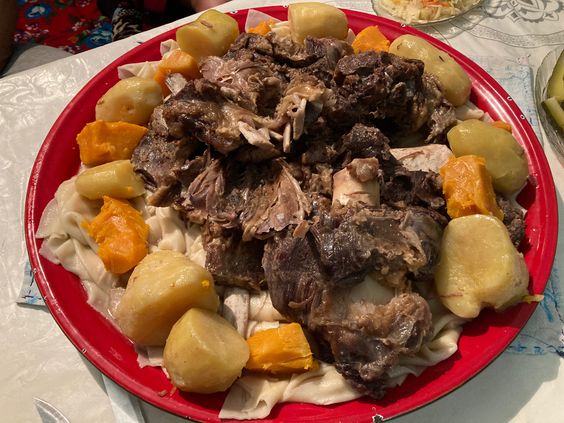Beshbarmak
Beshbarmak, a cherished dish in Central Asian cuisine, particularly in Kazakhstan and Kyrgyzstan, is steeped in rich tradition and cultural significance. The name "beshbarmak" literally translates to "five fingers," signifying the traditional way of eating the dish—by hand, reflecting the communal and convivial nature of the meal. This iconic dish typically features boiled meat, often lamb or beef, served with wide, flat noodles and a flavorful, aromatic broth. The dish is often garnished with onions and sometimes accompanied by root vegetables such as carrots and potatoes. The tender, succulent meat and the delicate, handmade noodles, combined with the savory broth, create a comforting and nourishing dining experience. Beshbarmakʻs preparation and enjoyment often extend beyond the culinary realm, serving as a symbol of togetherness, hospitality, and cultural heritage. In many Central Asian traditions, the act of preparing and sharing beshbarmak is tied closely to family gatherings, communal celebrations, and festive occasions, turning it into a powerful emblem of shared joy and goodwill. The cultural significance of beshbarmak reflects the deep-rooted importance of communal dining, the warmth of hospitality, and the cultivation of strong bonds through shared meals. The dish not only delights the palate but also embodies the spirit of unity and togetherness that is synonymous with Central Asian culinary traditions.

 English
English O'zbek
O'zbek Русский
Русский